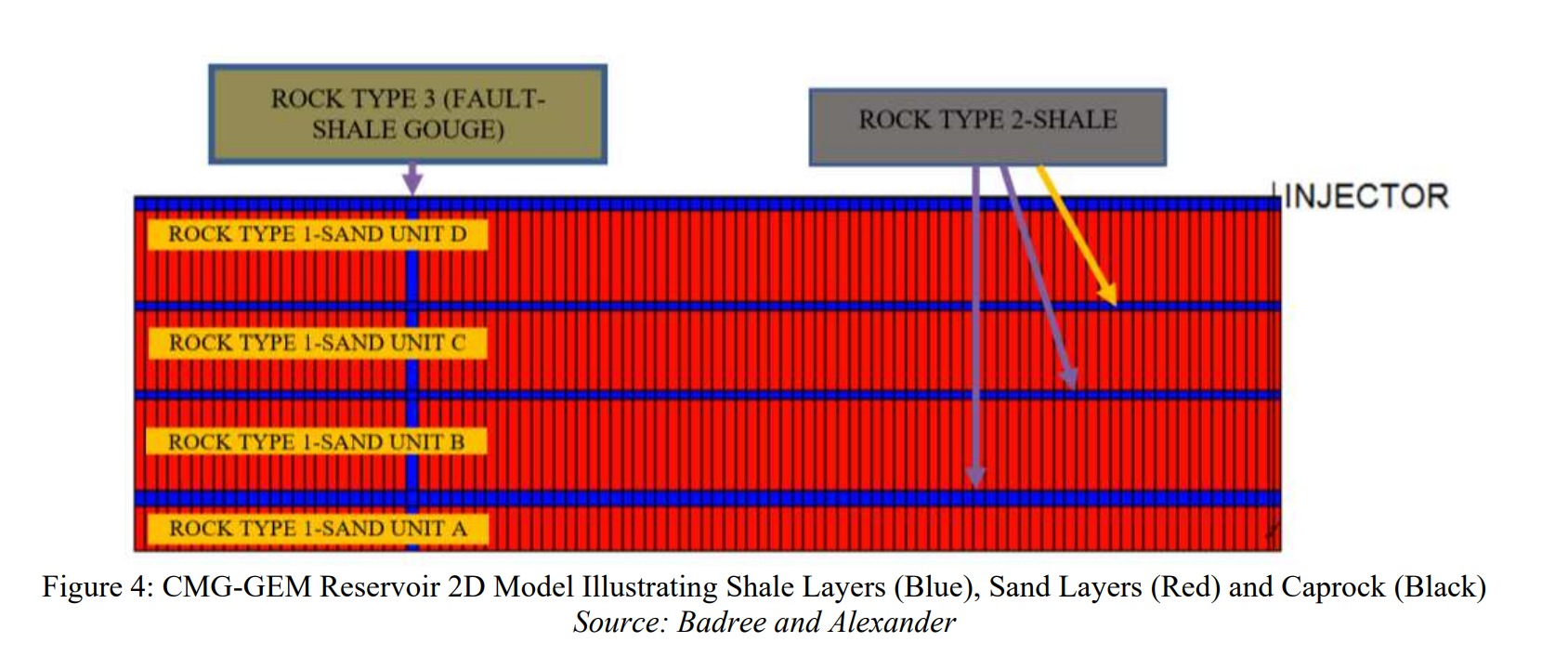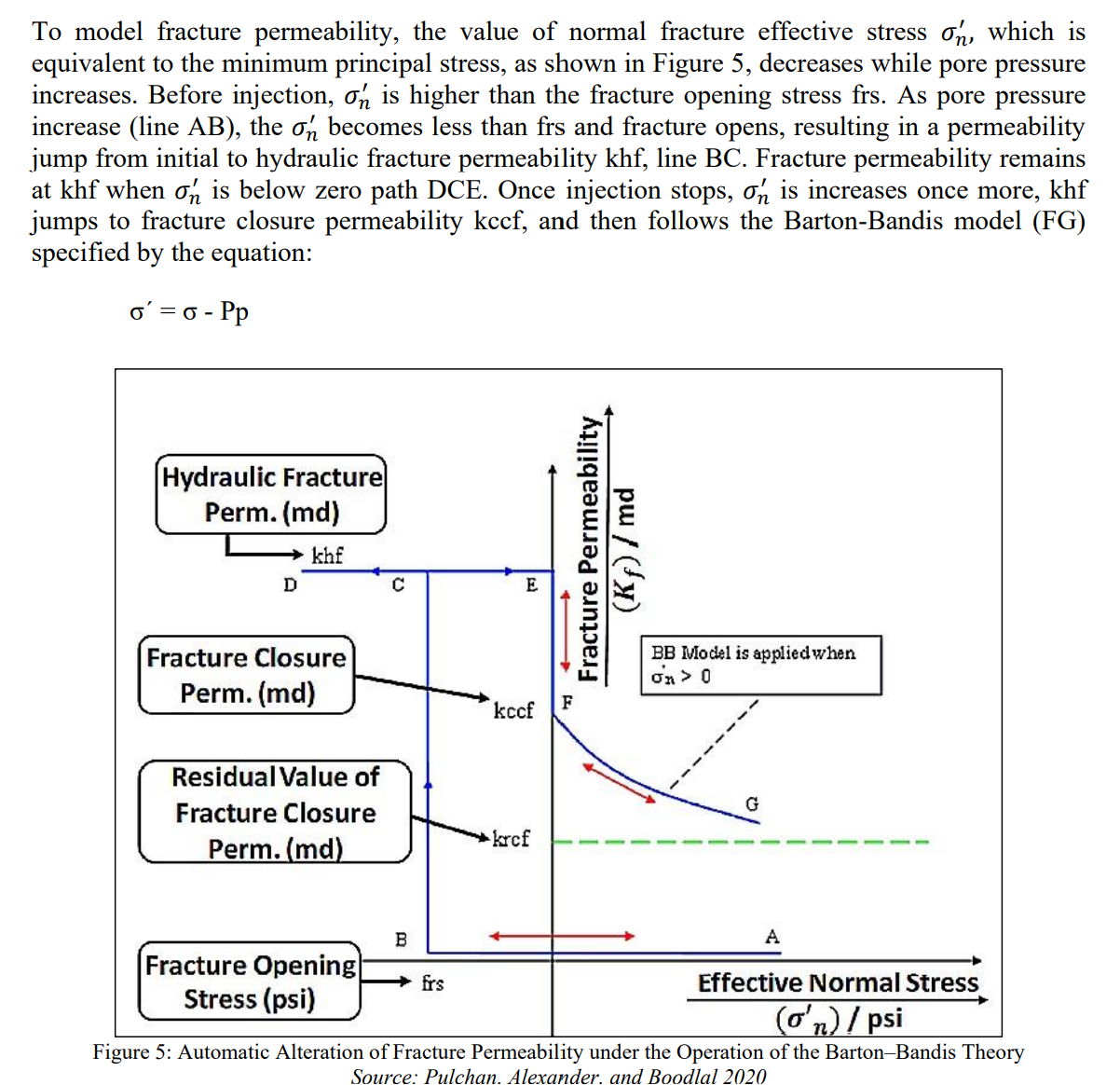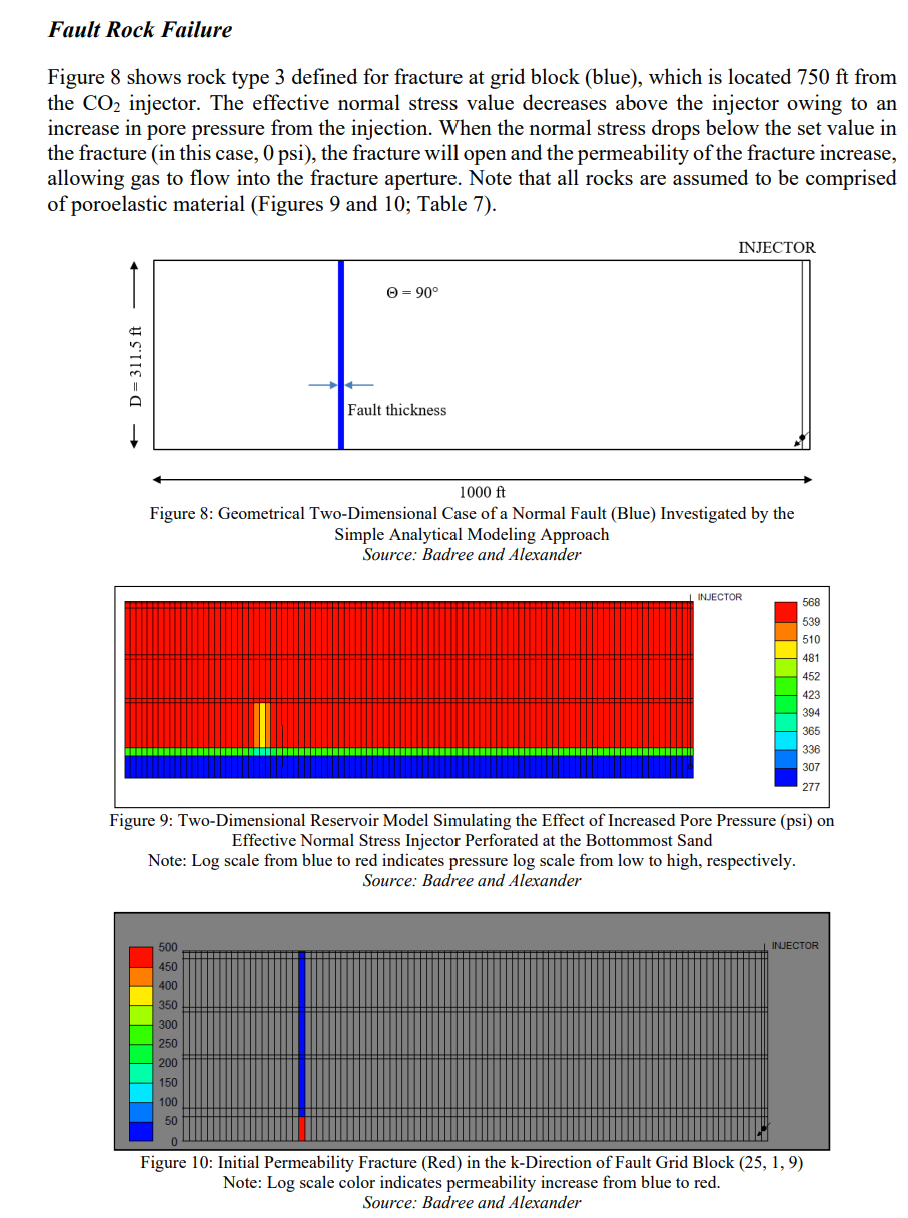Fault Reactivation and CO2 Migration in Carbon Storage in a Saline Aquifer
咸水层CO2封存的长期完整性和实际封存量取决于密封性和封存点的断层动态密封能力。本研究将特立尼达的Cruse储集层的岩石物理和地质力学特性应用于二维模型中,使用商业组分模拟器(CMG-GEM)。模拟了超临界CO2注入过程中断层重新活化和渗透率变化对CO2存储和泄漏的影响。
模型表明,当孔隙压力增加到总应力下,通过拉伸破裂形成诱导裂隙,使用Barton-Bandis破坏准则模拟了CO2沿断层的迁移。模拟结果显示,有效法向应力显著下降,导致拉伸破裂并形成通道使岩石粒子分离,增加了断层处的渗透率。模型中通过将注入速率从每天500 scf增加到每天1000 scf量化了CO2的存储。模拟结果显示,在1000年内没有发生气体泄漏到地表。
Abstract:
The injection of carbon dioxide (CO2) in the subsurface is one of the many possible solutions to address the increasing concentration of greenhouse gases (GHG) in the atmosphere. Saline aquifer reservoirs present substantial storage capacities for trapping CO2 that would have otherwise entered the atmosphere. Long-term integrity and practical storage of CO2 are contingent on seal performance and the dynamic sealing capacity of faults for CO2 storage sites. In this article, the petrophysical and geomechanical properties of a local reservoir in the Cruse formation located in Trinidad are applied to a 2D model using the commercial compositional simulator (CMG-GEM). During the injection of supercritical CO2, the effects on fault reactivation and sensitivities of the resulting change in permeability were modeled to evaluate efficacy of storage and leakage of CO2.
The model simulates the opening of a conductive fracture through tensile failure as pore pressure increases under total stress and also the migration of CO2 along the fault using the Barton–Bandis failure criterion. The simulation results show that the effective normal stress decreases extensively, resulting in tensile failure in which the rock is in effect being separated on grain-level creating channels and increasing permeability along the fault. In this model, the storage of CO2 was quantified by starting the injection rate from 500 and increased in increments of 100, up to 1,000 scf/day. Fault reactivation of the saline aquifer caused by pressurization by the injection of supercritical CO2 is observed. The model showed that no leakage to surface occurred over 1,000 years.
Keywords: Fault Reactivation, CO2 Sequestration, Barton–Bandis Fracture Permeability Theory, Saline Aquifer, CO2 Migration



Operation of the Barton–Bandis Theory


Conclusion
Rock mechanics play a significant role in the prevention of fault reactivation and must be studied carefully before quantifying CO2 injection strategies. The use of storage sites must be analyzed for stress anisotropies, shear yields, and the effects on plasticity resulting from reservoir fluid pressurization due to the injection of CO2. Some of the key observations recorded during this study include the following: The mass transfer of CO2 for storage occurs from the injector to the fault, and the transport of CO2 into the other overlying storage formations is dependent on the increase in injection pressure or pore pressure. Hydraulic communication between storage formations and all other saline formations was delayed owing to the fracture opening within the fault, making it harder to achieve optimal storage in the reservoir. The length of reactivation is affected by boundary conditions and total stress anisotropy. Reservoir initial total stress anisotropy characteristics and boundary conditions have the most significant impact on fault reactivation. Fracture-opening stress activates with increasing pore pressure, and permeability fracture remains open, thereby increasing the percentage of leakage to the producer penetrating the caprock.
